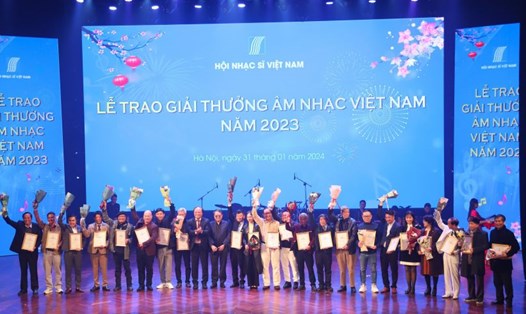Appearing in many orchestras around the world and impressing with its unique playing style, the accordion has left its mark on the hearts of millions of music lovers around the world. With the combination of piano-like keys into one instrument, this 19th century instrument has spread to many countries, participated in many orchestras and played captivating melodies.
The history of the accordion began in the early 19th century, although the concept of a reed instrument existed long before that. This instrument originated from the ancient Chinese musical instrument system, specifically the "sheng", a reed instrument that the Chinese had used for more than 3,000 years. The sheng was based on the principle of producing sound by pushing air through metal reeds, a basic element that the later accordion inherited.
A difficult guitar to play
The accordion is a musical instrument belonging to the keyboard family, with a rather complex operating mechanism but easy to understand when analyzing each part, with the main components including the wind box, keyboard, buttons and metal wind blades.
The bellows are the central and distinctive part of the accordion, resembling an inflatable tube that can be pulled in and out. They control the flow of air through the wind blades. When the player pulls or pushes the bellows, air is pushed in or out. As air enters the bellows, it flows through metal wind blades located in compartments inside the instrument. These wind blades produce sound as the air passes through them. The keyboard and buttons of the accordion are where the player interacts with the instrument. On the keyboard, the player can find keys for melodies and buttons for chords. When the player presses the keys or buttons, this opens the corresponding wind blades in the instrument. Each wind blade is controlled by a system of valves, allowing air to pass through and produce sound. The sound produced by the wind blades will depend on their size, shape, and material. Wind blades are usually made of metal, with different thicknesses and tensions, which affect the frequency and resonance of the sound.
In addition, the accordion has a number of other elements that contribute to its tone and playing style. One of these is the reed ranks. Different types of reeds can be used to produce different tones. Players can select tones through the use of registers, which allow them to switch between different groups of reeds.
What makes the accordion special is its ability to play both melody and chords at the same time. By pulling the wind box out or pushing it in, the player can create a melody while still maintaining a rich sound background of chords. This makes the accordion a unique instrument, capable of performing a full piece of music on its own without the aid of another instrument.
The Journey of the Organ
The accordion as we know it today was developed in Europe in the early 19th century. In 1829, Cyrill Demian, an Armenian luthier living in Vienna, Austria, patented a new instrument he called the “accordion.” Demian’s design was simple, with a single keyboard, but it was able to produce rich sounds from multiple chords as the player pulled and pushed the air pump. What was unique about his invention was that it produced two-way sound: One note was played when the air was pumped in, and another note was played when the air was released.
After Demian's invention, the accordion was rapidly improved and developed. By the mid-19th century, variations of the accordion had appeared throughout Europe, with each country adding their own unique features to the instrument. In Germany, more keys were added to the accordion and the sound quality was improved. In Italy, technical and aesthetic improvements made the accordion a popular instrument in folk music, especially in Naples.
France also contributed greatly to the development of the accordion, as the French developed more complex keyboard systems and adapted the instrument to suit a variety of musical genres. Since the late 19th century, the accordion has become an integral part of traditional French music, especially in dances such as the waltz musette.
As Europeans migrated to America in the late 19th and early 20th centuries, the accordion followed them to many new lands, becoming a popular instrument in immigrant communities. In the United States, the accordion became a symbol of folk music for many ethnic groups, from German communities in Texas to Italian communities in New York. In the 1950s and 1960s, the accordion even became popular in American pop and jazz bands.
In Vietnam, the accordion was introduced from Europe in the mid-20th century, through revolutionary art programs and cultural exchanges with socialist countries, especially the Soviet Union. During the period 1950 - 1970, the accordion became a popular instrument in art troupes serving the people and the army, thanks to its mobility, portability and ability to produce rich sounds. The accordion was widely used in revolutionary music performances, as an accompaniment to patriotic songs and melodies encouraging fighting spirit.









